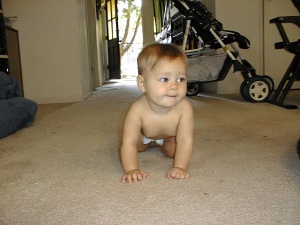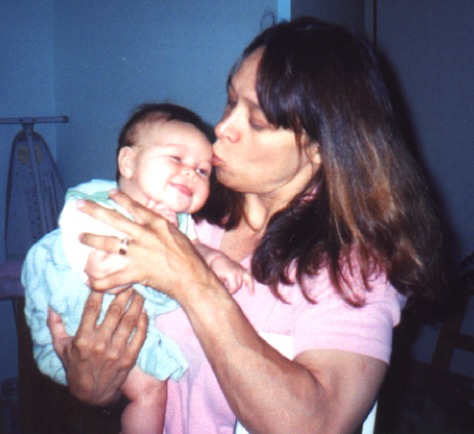AN example of Social referencing-- here
Julia looks to her father for a cue as to whether it is safe to chase after
the cat. According to research reviewed in your textbook, if he looks frightened,
she is likely to stop, but if his facial expression is excited or amused
she is more likely to continue crawling after it. -------------------------------------------------------------------->
(In case you are interested, this worked exactly as the research predicted.
He laughed, she chased after the cat and Smokey (the cat) narrowly escaped
through the open door.

